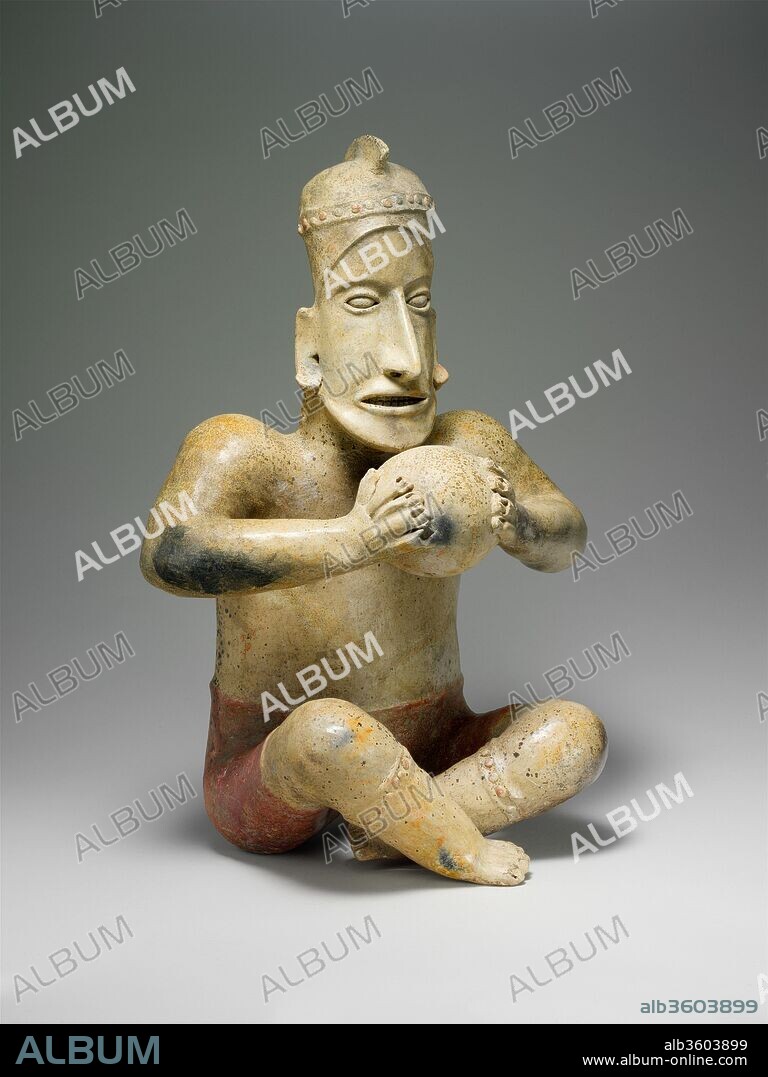alb3603899
Seated Ballplayer

|
Añadir a otro lightbox |
|
Añadir a otro lightbox |



¿Ya tienes cuenta? Iniciar sesión
¿No tienes cuenta? Regístrate
Compra esta imagen

Título:
Seated Ballplayer
Descripción:
Ver traducción automática
Seated Ballplayer. Culture: Ameca-Etzatlán. Dimensions: H. 19 5/8 x W. 13 in. (49.8 x 33 cm)
Ball: Diam. 8.5 cm. Date: 1st century B.C.-A.D. 3rd century.
Images of ballplayers were made in ancient Mexico for millennia. The game, played with a large rubber ball, was fast paced and had many layers of meaning--and it was always a significant male activity. Depictions of both game and players appear in the ceramic sculptures of Jalisco, a state on the west coast of Mexico, where such works were produced in the centuries around the turn of the first millennium when their makers flourished. This impressive seated player, in the Ameca-Etzatlan style of Jalisco, holds the large ball reverentially high, in a manner of presentation. His short "pants," a typical player costume, protect the lower body as the ball was propelled with the hips low to the ground. In remote areas of Mexico a game was played in this manner well into the twentieth century.
The ceramic sculpture of Jalisco was used as funerary offerings in the tombs of members of important families. It is conjectured that depictions of ballplayers were meant to accompany the burial of a man who had been a skilled player.
Técnica/material:
ceramic
Museo:
Metropolitan Museum of Art, New York, USA
Crédito:
Album / Metropolitan Museum of Art, NY
Autorizaciones:
Modelo: No - Propiedad: No
¿Preguntas relacionadas con los derechos?
¿Preguntas relacionadas con los derechos?
Tamaño imagen:
3150 x 4200 px | 37.9 MB
Tamaño impresión:
26.7 x 35.6 cm | 10.5 x 14.0 in (300 dpi)
Palabras clave:
 Pinterest
Pinterest Twitter
Twitter Facebook
Facebook Copiar enlace
Copiar enlace Email
Email
